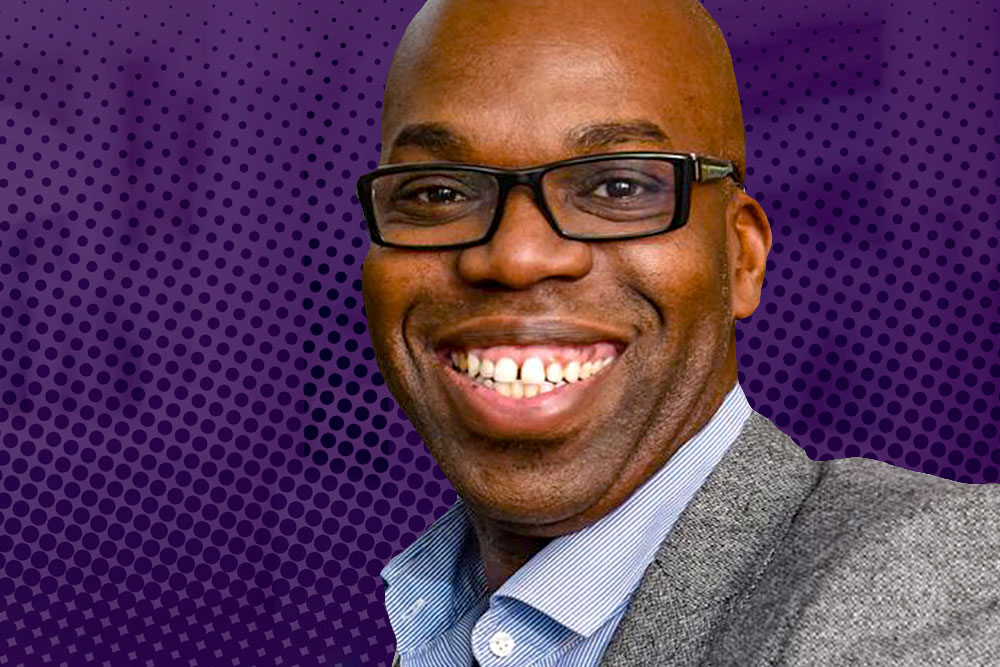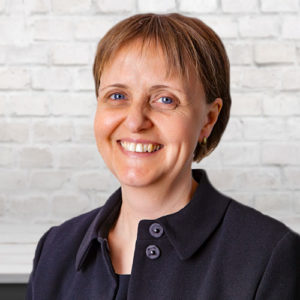The new director of cloud at UKCloud Health talks about how his career has given him a passion for technology-enabled change, and why he has left NHS Digital to return to the private sector to drive the next developments in health and care.
Cleveland Henry jokes that people ask him why he has “gone to the dark side”; or left the NHS to join one of its health tech suppliers, UKCloud Health. However, he has moved between the private and public sectors throughout his career.
“I started way back when at what is now the largest IT provider in primary care in the UK,” he says, “but at the time I was employee number 17.” After five years at what became EMIS Group, Henry set off on what he describes as a “roadshow of companies” in different consumer sectors, before landing at what is now Lloyds Banking Group.
As business service manager, he was responsible for the delivery of IT services for its retail banking, fraud and marketing functions. Then, after almost seven years, he was asked to go back to EMIS to help launch its ‘next-generation’ product, EMIS Web.
If anything, it was the NHS that Henry found himself working for almost by accident. “I joined Capita, and by doing that found myself at NHS Digital, as NHS Choices was insourced to what was then the Health and Social Care Information Centre,” he says.
Henry found the change of culture and pace difficult initially; but the “huge upside” was the impact that NHS Choices had on patients. “Some of the work we were doing was about reassuring people at 2am or stopping them from having to walk into that GP surgery at 9am, and that was great,” he says. “I still love NHS Choices.”
The contract challenge
More recently, Henry was responsible for the NHSmail service and for getting it off its old, out of capacity and failing platform, and onto the NHSmail2 set-up, with a different contractor. The huge job, with “some painful days and nights” may have cemented his “reputation as a fixer”, but it also raised some fundamental questions about the health service’s relationship with IT.
“I said I felt we should not be locked into such a long-term contract, with prescribed technology, when technology was and is evolving at pace,” he says. “That’s an issue for NHS IT generally. How do we avoid getting into a position where we are locked into one path?”
The NHS has just launched a long-term plan that depends on technology and attempts to lay out milestones for everything from deploying electronic patient records to creating “digital first” GP and outpatient services. Yet trying to predict how IT will change services and attitudes over ten-years is almost impossible, Henry points out. After all, it’s just a decade since the iPhone was launched; and few people could, or did, plan for its impact.
“You can have a vision, but you need to have flexibility,” he says. “If you enter a long-term contract, you need to have points at which you can think about whether you need to break it early and, if you do, how you are going to get the most out of it first.”
The transformation challenge
Henry’s career has left him asking more fundamental questions about the NHS’ experience of technology; and whether it has grasped the opportunity to change. “When I worked for Lloyds, banking was moving away from its traditional model to finger-tip banking,” he says. “It was ripe for change, because more people had access to computers and mobile phones were just coming in. What the banks did, because they faced competition and increased demand, was to strive to offer the best experience, because otherwise they would have lost customers. But they also looked for ways to become more efficient.
“Banks had all these lovely buildings on the High Street, that achieved most of their footfall between 12pm and 2pm, Monday to Friday. They looked at whether they really needed all that infrastructure, and they soon realised that most of the things that people went into a branch to do were simple. It was just that, stuck in the queue, there were small percentage of people who wanted something really complicated, like a mortgage or detail financial advice. So, they took the simple transactions online and focused on the people who needed a face to face or more personalised service.
“That is something the NHS can learn from. Lots of its ‘transactions’ are also simple, but currently people have to queue up somewhere to do them, sadly often the 8am queuing telephone system or the dreaded waiting room.” Henry finds it particularly frustrating that his first love, primary care, has not moved as far as it might have done.
“When I went back to EMIS, it was quite frustrating to see how GPs were using technology,” he says. Although it’s not just GPs. “We have computerised a lot of the NHS, but we have done it by digitising paper processes,” he adds. “Even that has taken a long time, for many reasons but one of them is because nobody wanted to make a mistake and, of course, patient safety is key. But ways of working have not significantly changed.”
The tech renewal challenge
For all its challenges, the NHS has at least been trying out new kinds of services through technology. “While I was at NHS Choices, we saw usage go through the roof – from around 20 million hits a month to 50 million,” Henry says. “That was based on really deep analysis of what people looked for and ensuring it was dynamic to meet those requirements. We had thousands of pages of condition information, but we had to be acutely aware of what was topical and what people would be searching for and when.”
On the technology front, this led him to advocate moving to a cloud platform, so manage peaks and troughs in demand. “One of the things we learned was that if a press release went out about the latest condition, or there was a piece on a breakfast show about an issue, we would get a big spike in interest,” he says.
“We realised that we needed to be ready for those peaks all the time; but we couldn’t just keep adding more servers to do it. We’d had seen other industries using cloud computing to enable dynamic growth more efficiently, so we decided to give it a go. We migrated NHS Choices to the cloud to manage peaks – and we cut infrastructures costs by two thirds while improving the service availability and performance.”
Spreading change, England-wide
In his last year at NHS Digital, Henry spent a lot of time travelling and a lot of time talking to innovators. He says he learned that many of the sources of the relentless rise in demand on the NHS – from the ageing population to the growth in multimorbidity – are common to developed nations; but some have done more to “shift the needle” on prevention and management than others. At the same time, he says he came to share the frustration of innovators, who can endeavour to get a small part of the NHS to adopt an idea, and then struggle to spread it more widely.
“My dad died last year,” he says. “Of course, that was very difficult emotionally, but there were also real, positive experiences, because he died in Leeds, and Leeds has a shared care record. The continuity of care that technology enabled and supported was amazing. The nurse, or whoever, came to do the door and looked at their laptop or tablet to see what needed to be done, and it just happened. It allowed the family to focus on the quality time we had left with Dad, instead of fighting with the system, repeating the answers to the questions to ensure his care was appropriate.
“We have got to get to the point where that is happening across the country, not just if you are lucky enough to live in a place where it works.” Henry is sceptical about whether some of the NHS’ flagship programmes will make this happen. He worries, for example, that the global digital exemplar programme will “create a bigger gap between the haves and the have-nots” instead of closing it.
He worries that the NHS Long Term Plan perpetuates the exemplar approach, when it should be focusing on the cultural issues that prevent adoption, on better measures of progress, and of being brave enough to change or stop things that are not working.
The dark side: not that dark
“People say ‘we don’t have enough money all the time, I don’t completely disagree. But they don’t stop often enough and ask if the money that is available is being spent the right place,” he says. “Having said that, we have a great opportunity to learn from what is taking place locally and in other countries, to inform ourselves about what technology can do, and how to get things aligned properly to get the transformation that we all know has to come.”
After the best part of six, successful years with NHS Digital, Henry felt it was time to find another role in which to drive that change. “UKCloud Health had a number of things for me,” he says. “Number one, as a business they are – we are – dedicated to doing the right thing. We are trying to provide the technology to enable digital transformation to happen.”
“To bring about the changes I spent the last year talking about, we will need big data on a much bigger scale than has been tried so far. Little, creaky data centres, adding a disk here and a disk there as more data comes in, is not the way to do it. Those days are gone. [Health and social care secretary] Matt Hancock’s vision is great, but we need some serious foundations to realise it, and I think cloud computing will be one of them.”
Back in the private sector, he says, he’s getting the best of both worlds. “Great support on building a tech vision, the values of doing the right thing. I have gone over to the dark side. But I keep telling people – it’s not that dark.”



